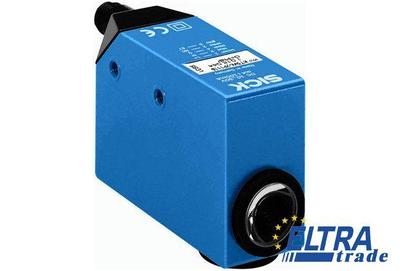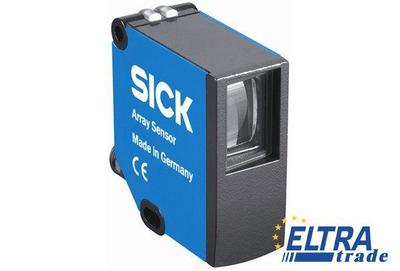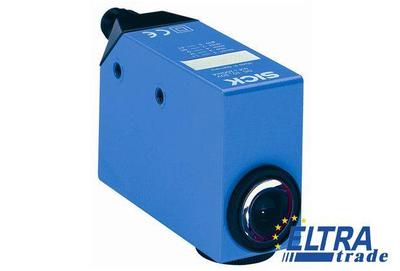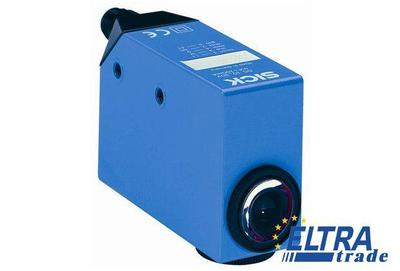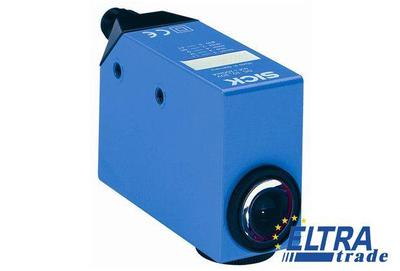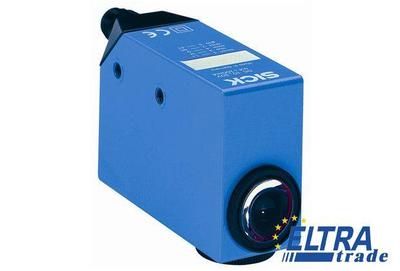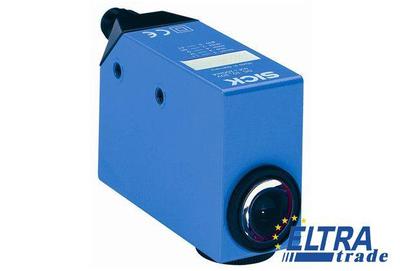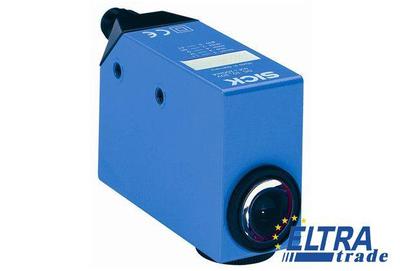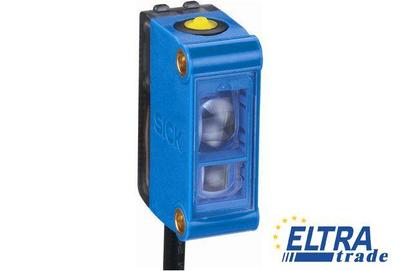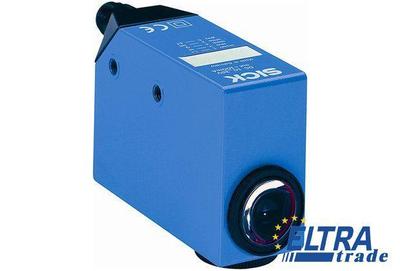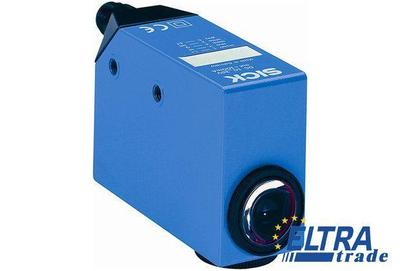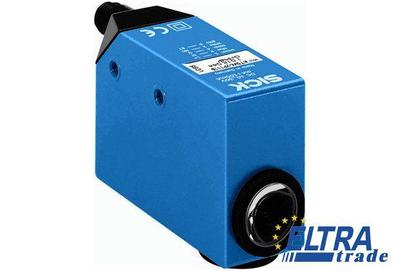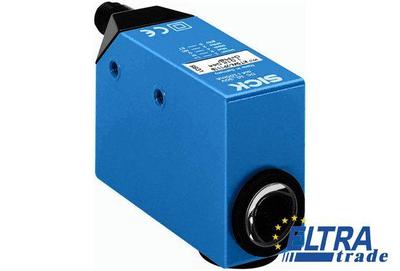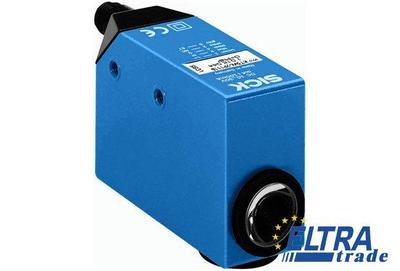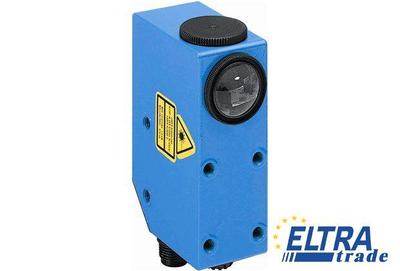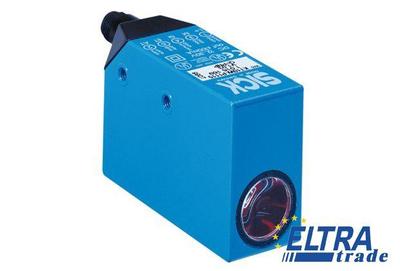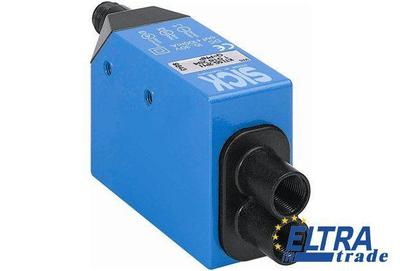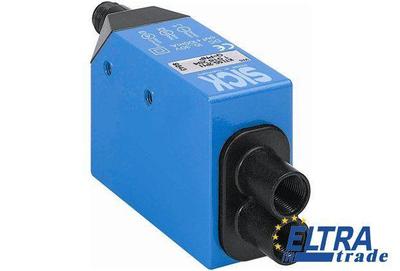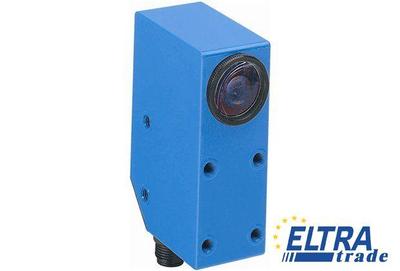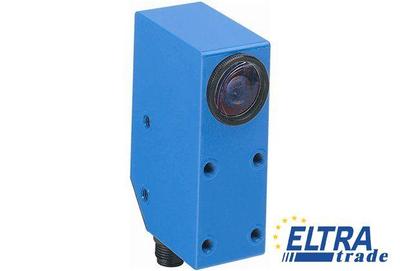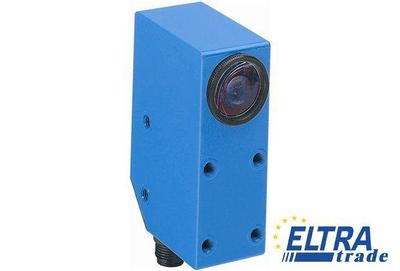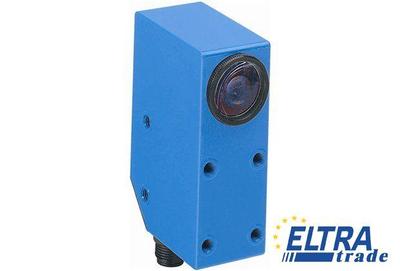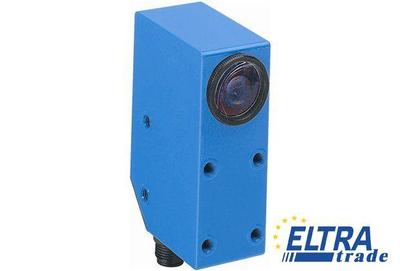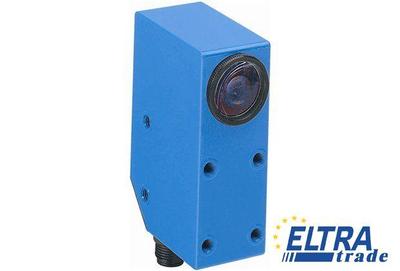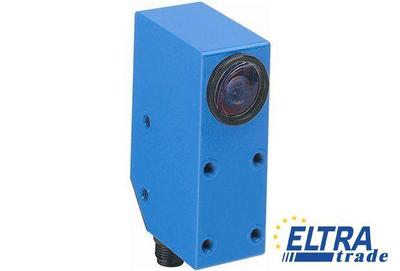Sick Registration sensors
Contrast sensor
- Switching frequency: 10 kHz
- Ambient temperature: -10 ... 55 °C
- Dimensions: 80 mm x 30.4 mm x 53 mm
- Detect position of edge of material
- Reflector mode version also available
- Compact, metal housing
- One (CS8-1) or four (CS8-4) colors can be saved
- 12.5 mm or 60 mm sensing distance
- Fast response time up to 85 µs
- One (CS8-1) or four (CS8-4) colors can be saved
- 12.5 mm or 60 mm sensing distance
- Fast response time up to 85 µs
- One (CS8-1) or four (CS8-4) colors can be saved
- 12.5 mm or 60 mm sensing distance
- Fast response time up to 85 µs
- One (CS8-1) or four (CS8-4) colors can be saved
- 12.5 mm or 60 mm sensing distance
- Fast response time up to 85 µs
- One (CS8-1) or four (CS8-4) colors can be saved
- 12.5 mm or 60 mm sensing distance
- Fast response time up to 85 µs
- One (CS8-1) or four (CS8-4) colors can be saved
- 12.5 mm or 60 mm sensing distance
- Fast response time up to 85 µs
- One (CS8-1) or four (CS8-4) colors can be saved
- 12.5 mm or 60 mm sensing distance
- Fast response time up to 85 µs
- Color sensor in a new miniature housing
- Static and automatic teach-in method using control panel or IO-Link. Over IO-Link up to 8 colors teachable.
- Improved gloss behavior
- Very low jitter (< 10 µs)
- Precise light spot
- Best contrast resolution thanks to RGB LED technology
- Very low jitter (< 10 µs)
- Precise light spot
- Best contrast resolution thanks to RGB LED technology
- Tough, metal housing
- Various teach-in methods via control panel or control cable
- Maximum detection reliability due to 3-color RGB LED technology
- Intuitive 10-segment bar graph display indicates detection status
- Static 2-point teach-in of mark and background via the control cable
- Maximum detection reliability due to 3-color RGB LED technology
- Intuitive 10-segment bar graph display indicates detection status
- Static 2-point teach-in of mark and background via the control cable
- Maximum detection reliability due to 3-color RGB LED technology
- Intuitive 10-segment bar graph display indicates detection status
- Static 2-point teach-in of mark and background via the control cable
- Maximum detection reliability due to 3-color RGB LED technology
- Wide range of operating distances between 30 mm and 800 mm
- Small and precise laser light spot (Class II)
- Fast switching frequency of 17 kHz
- Wide range of operating distances between 30 mm and 800 mm
- Small and precise laser light spot (Class II)
- Fast switching frequency of 17 kHz
- Wide range of operating distances between 30 mm and 800 mm
- Small and precise laser light spot (Class II)
- Fast switching frequency of 17 kHz
- Very low jitter (< 10 µs)
- Precise light spot
- Best contrast resolution thanks to RGB LED technology
- Various heat-resistant fiber-optic cable models are available
- Various teach-in methods, including potentiometer
- Analog output
- Various heat-resistant fiber-optic cable models are available
- Various teach-in methods, including potentiometer
- Analog output
- Tough metal housing
- Sensing distance: 10, 20 or 50 mm
- Sensing distances selectable through interchangeable lenses
- Tough metal housing
- Sensing distance: 10, 20 or 50 mm
- Sensing distances selectable through interchangeable lenses
- Tough metal housing
- Sensing distance: 10, 20 or 50 mm
- Sensing distances selectable through interchangeable lenses
- Tough metal housing
- Sensing distance: 10, 20 or 50 mm
- Sensing distances selectable through interchangeable lenses
- Tough metal housing
- Sensing distance: 10, 20 or 50 mm
- Sensing distances selectable through interchangeable lenses
- Tough metal housing
- Sensing distance: 10, 20 or 50 mm
- Sensing distances selectable through interchangeable lenses
- Tough metal housing
- Sensing distance: 10, 20 or 50 mm
- Sensing distances selectable through interchangeable lenses
- Tough metal housing
- Sensing distance: 10, 20 or 50 mm
- Sensing distances selectable through interchangeable lenses
Sick is a well-known manufacturer of sensors and sensor solutions, offering a wide range of products for various industries. Their registration sensors, also known as photoelectric sensors or vision sensors, have many applications, particularly in industrial automation. Below we will take a closer look at this topic.
Applications of Sick Registration Sensors
Let's look at the most common areas of application for Sick registration sensors.
- Printing and packaging. Registration sensors are commonly used in the printing and packaging industry to provide precise positioning and alignment of labels, mark detection, or graphics on products or packaging materials. They detect registration marks or targets on the material and provide feedback for accurate placement.
- Conveyor systems. In conveyor systems, registration sensors are used to detect the presence, position, or orientation of objects as they move along a conveyor belt. They can be used to sort, count, and track items, ensure proper spacing, or trigger specific actions at specific points.
- Robotics and automation. Registration sensors play a vital role in robotic systems and automation processes. They are used for object detection, presence detection, and positioning verification, enabling robots to perform tasks with high accuracy and reliability. For example, in pick-and-place applications, registration sensors help robots determine the location and orientation of objects for accurate pick-up and placement.
- Material handling and logistics. Registration sensors are used in material handling systems such as warehouse automation or logistics operations to track the movement and position of items. They can help you manage inventory, track the flow of parcels, detect jams or misalignments in conveyor systems, and ensure efficient sorting and routing.
- Machine vision. Sick also offers vision sensors that combine image capture capabilities with advanced image processing algorithms. These sensors are used in applications such as quality control, part identification, and inspection. They can detect defects, measure dimensions, read barcodes, or check for certain features on products.
- Automotive industry. Registration sensors are used in automotive manufacturing processes for tasks such as positioning components, aligning parts during assembly, or checking for the presence and alignment of car body panels. They contribute to overall precision and quality control in automotive production lines.
Key Features and Benefits of Sick Registration Sensors
Each Sick registration sensor has several key features and benefits that make them popular in a variety of industries.
- High accuracy. Sick registration sensors are designed to provide accurate and reliable detection and positioning. They offer high-resolution touch capabilities that enable precise alignment, object detection, or measurement.
- Universal sensor technologies. Sick offers a wide range of registration sensors based on various sensor technologies, including photoelectric, laser, and video sensors. This versatility allows users to select the technology best suited to their specific requirements.
- Flexible mounting options. These sensors are available in a variety of form factors and mounting options, including inline, compact, or modular designs. This flexibility allows them to be easily integrated into a variety of equipment or systems, making them suitable for a variety of installation scenarios.
- Rugged construction. These sensor solutions are designed to work in harsh industrial environments. They are often resistant to dust, moisture, vibrations, and temperature fluctuations, ensuring reliable operation even in difficult conditions.
- Easy setup. Sick registration sensors have a user-friendly interface and intuitive setup options. This simplifies the setup process and reduces the time required for installation and commissioning.
- Advanced connectivity and integration. Such devices often support industry standard communication protocols such as Ethernet, IO-Link, or fieldbus interfaces. This provides seamless integration with other automation equipment and systems, facilitating data exchange and remote monitoring.
- Diagnostic and monitoring capabilities. Many Sick registration sensors offer built-in diagnostic and monitoring features. These features allow users to monitor sensor performance, troubleshoot and troubleshoot, and take proactive maintenance actions to minimize downtime.
- Increased productivity and efficiency. By providing accurate registration, alignment, or object detection, Sick Registration Sensors help improve productivity and efficiency in manufacturing processes. They help to minimize errors, reduce waste and improve overall process control.
- Security features. Some registration sensors have safety features such as built-in muting or shield field control. These features enhance worker safety by ensuring that sensors can detect human presence or potential hazards and respond to them.
Factors to Consider when Choosing Sick Registration Sensors
When choosing a Sick registration mark sensor, there are several factors to consider.
- Sensor technology.
- Sensitivity range, response time, and field of view.
- Accuracy and resolution.
- Environmental conditions.
- Mounting and installation.
- Connectivity and integration.
- Application-specific functions.
- Ease of use and setup.
- Reliability and support.
- Price.
Types of SICK Registration sensors
- Contrast sensors
- Color sensors
- Fork sensors
- Luminescence sensors
